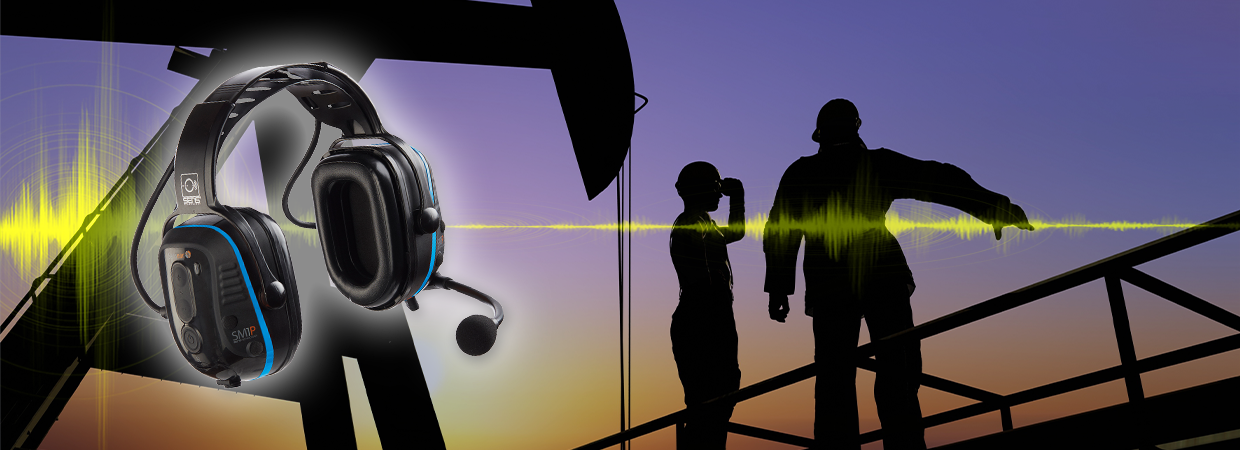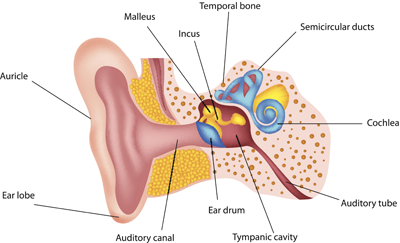- Home
- Blog
- Noise-Induced Hearing Loss
- World Hearing Day 2023

Today is World Hearing Day, which is held every year on March 3rd to raise awareness for hearing loss prevention and promote hearing care across the world. Every year, the World Health Organization (WHO) chooses a theme for World Hearing Day and creates data-driven material to advocate for hearing safety. According to WHO, "World Hearing Day 2023 will highlight the importance of integrating ear and hearing care within primary care, as an essential component of universal health coverage" (WHO, 2023). Check out WHO's website for updated training and testing suggestions.
Hearing loss affects many individuals worldwide, but perhaps even more in high-noise industrial work environments. Even with a brief amount of exposure, very loud noise can temporarily or permanently damage workers' inner ears. This damage is called Noise-Induced Hearing Loss (NIHL) and typically occurs in high-noise work environments where noise exceeds 85 dB(A). Occupational noise-induced hearing loss is also commonly referred to as industrial deafness. NIHL can cause a condition called “tinnitus," which causes a ringing in the ears of the person affected. This may be a temporary condition, occurring occasionally, or in worst cases, become a permanent condition that is constantly present.
Employee safety must always be the top priority in the workplace. When the risk of occupational hazards increases in certain professions, preventative measures to protect employees become increasingly crucial. The risks increase significantly when employees are exposed to consistent loud noise as part of their daily roles. A deep understanding of the causes, effects, and prevention measures available can help to protect employees at risk.
Loud Noises: One of the Leading Causes of Hearing Loss

Loud noises commonly cause hearing loss over time. Specifically, the inner compartments of the ear easily become damaged when the ear is exposed to repeated, regular loud noises over a long period of time. Whereas age-related hearing loss happens naturally and gradually over time, noise-induced hearing loss occurs with regular exposure to loud noises. This exposure speeds up the process of natural hearing loss over time.
Noise-induced hearing loss occurs due to damage to the cochlea. The cochlea is a coiled, spiral tube section in the inner ear where sensitive hair cells become tarnished. While there are varying degrees of hearing loss, there are three main types of hearing loss. According to the American Speech-Language-Hearing Association (ASHA), these three basic types are conductive hearing loss, sensorineural hearing loss, and mixed hearing loss.
Types of Hearing Loss
1. Conductive Hearing LossConductive hearing loss occurs when sound cannot make it through the outer and middle ear to reach the inner ear. With this type of hearing loss, it becomes harder to hear soft sounds and louder sounds may be muffled. Oftentimes, medication or surgery can fix conductive hearing loss.
Conductive hearing loss can be caused by the following:
- Fluid in the middle ear caused by colds/allergies
- Ear infection
- Poor Eustachian tube (connects the middle ear to noise) function
- Hole in eardrum
- Benign tumors
- Earwax stuck in the ear canal
- Swimmer’s ear infection
- Object stuck in the outer ear
- Deformation of the outer or middle ear
Sensorineural hearing loss is caused by inner ear damage, such as problems with the nerve pathways from the inner ear to the brain. This is the most common type of hearing loss and is oftentimes permanent. However, hearing aids may help with this type of degradation. With this hearing loss, soft sounds may be hard to hear, and loud sounds may be unclear or muffled.
This type of hearing loss can occur when working in loud or extreme noise environments. Tinnitus (ringing in the ears or hearing different disruptive sounds such as hissing, buzzing, whistling, or humming) can be a symptom of this type of hearing loss.
Sensorineural hearing loss can be caused by the following:
- Illnesses
- Drugs that are toxic to hearing
- Genetic hearing loss
- Aging
- Blow to the head
- Deformation in the inner ear
- Loud noises or explosions
Mixed hearing loss happens when conductive hearing loss and sensorineural hearing loss occur at the same time. This means that there is damage in the outer or middle ear and in the inner ear. This happens when working in loud-noise environments. Together, conductive hearing loss and sensorineural hearing loss can make hearing worse than with only one problem.
What are the Warning Signs that a Workplace May be Too Noisy?
- Having to shout to be heard in your work environment
- A ringing or humming in your ears when you leave the noisy area
- A temporary hearing loss that continues outside the noisy work area
Methods to Avoid Occupational Hearing Loss
NIHL is the only 100% preventable type of hearing loss. However, once the damage has occurred, it is irreversible. Understanding noise hazards and protecting your workers in a high-noise work environment can go a long way to avoiding incidences of NIHL. The following key methods will help avoid hearing loss:
- Identify the workplace noises that cause damage to hear at or above 85 dB(A).
- Place a barrier between the noise source and the workers – or better yet, move the noisy equipment into a noise enclosure.
- Maintain your machinery and equipment to avoid extra noise from malfunctions.
- Move workers farther away from noisy equipment – increased distance reduce exposure to hazardous noises.
- Limit the amount of time a worker spends near noisy equipment.
- Use proper fitting personal hearing protection, such as earplugs or earmuffs. Base your decision on work conditions and worker preference. Hearing protection that is not worn or removed often offers no hearing protection at all.
- Ensure that the hearing protection being worn limits the sound output level, to ensure workers aren’t exposed to loud sounds coming into the headset via two-way radio or a music player.
- Provide quiet areas where workers can get away from the hazardous noises to allow time for hearing to recover.
- Provide regular hearing checks for those workers exposed to hazardous noises.
High levels of occupational noise remain a problem in all regions of the world. It is important for businesses that utilize high-noise machinery and equipment to understand this problem and provide appropriate hearing protection for their workers. With improvements in technology such as smart communication headsets and earplugs, this is becoming a less daunting task.
Resources:
-
World Hearing Day 2023: Ear and hearing care for all | hear-it.org
Learn more about key messages and training manuals for World Hearing Day 2023.
-
World Hearing Day | WHO
Find out what World Hearing Day is all about.
-
World Hearing Day 2023 | WHO
Learn more about this year's World Hearing Day theme.








